What is DNA?
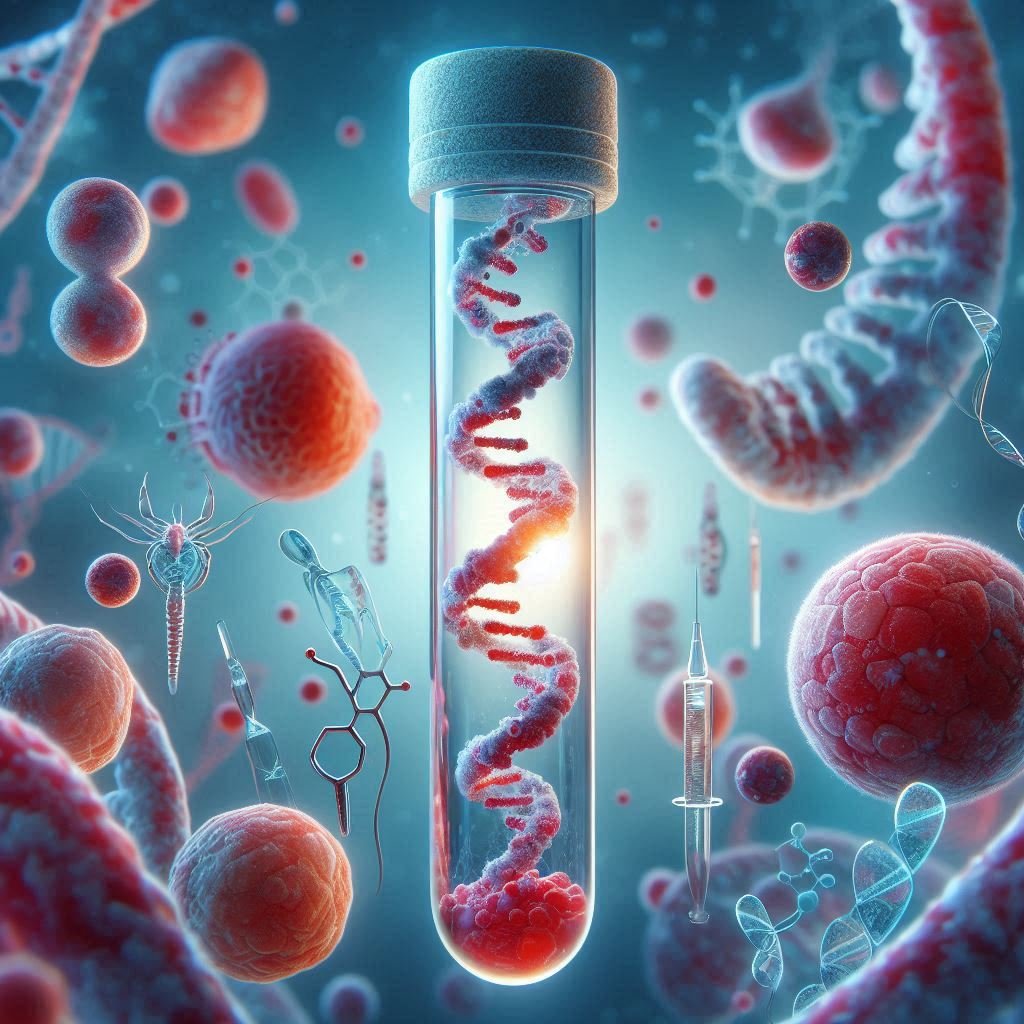
DNA full form is deoxyribonucleic acid, is a molecule that stores the genetic instructions necessary for the growth and operation of numerous viruses as well as all known living things. It is a long molecule composed of two strands coiled around each other to form a double helix. Each strand is made up of simpler molecules called nucleotides, which are linked together in a specific sequence.
The sequence of nucleotides in DNA carries the genetic information that determines an organism’s traits. This information is encoded in the sequence of four nitrogenous bases: adenine (A), thymine (T), cytosine (C), and guanine (G). The specific sequence of these bases in DNA molecules forms genes, which in turn encode proteins or regulate gene expression.
Importance of DNA copying in reproduction?
DNA copying, also known as DNA replication, is crucial in reproduction for several reasons:
1. Transmission of Genetic Information: DNA copying ensures that each new cell or organism receives an accurate copy of the genetic information from the parent cell or organism. This is essential for passing on genetic traits from one generation to the next.
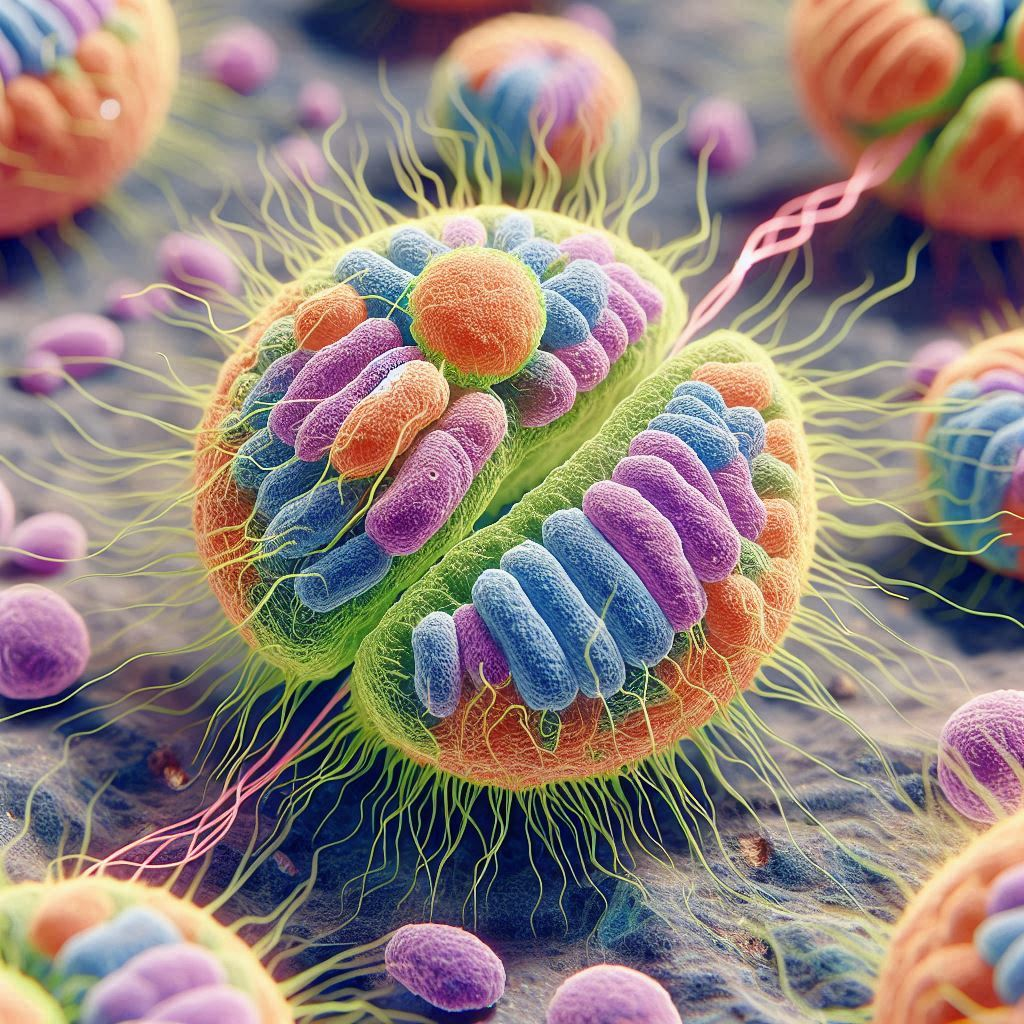
2. Cell Division: Reproduction involves cell division, where a parent cell divides to produce two daughter cells. Before division, the parent cell’s DNA must be replicated so that each daughter cell receives a complete set of genetic instructions.
3. Maintenance of Genetic Integrity: DNA copying includes mechanisms that ensure accuracy and fidelity in copying the genetic information. This helps maintain the integrity of the genetic code across generations, reducing the likelihood of mutations or errors being passed on.
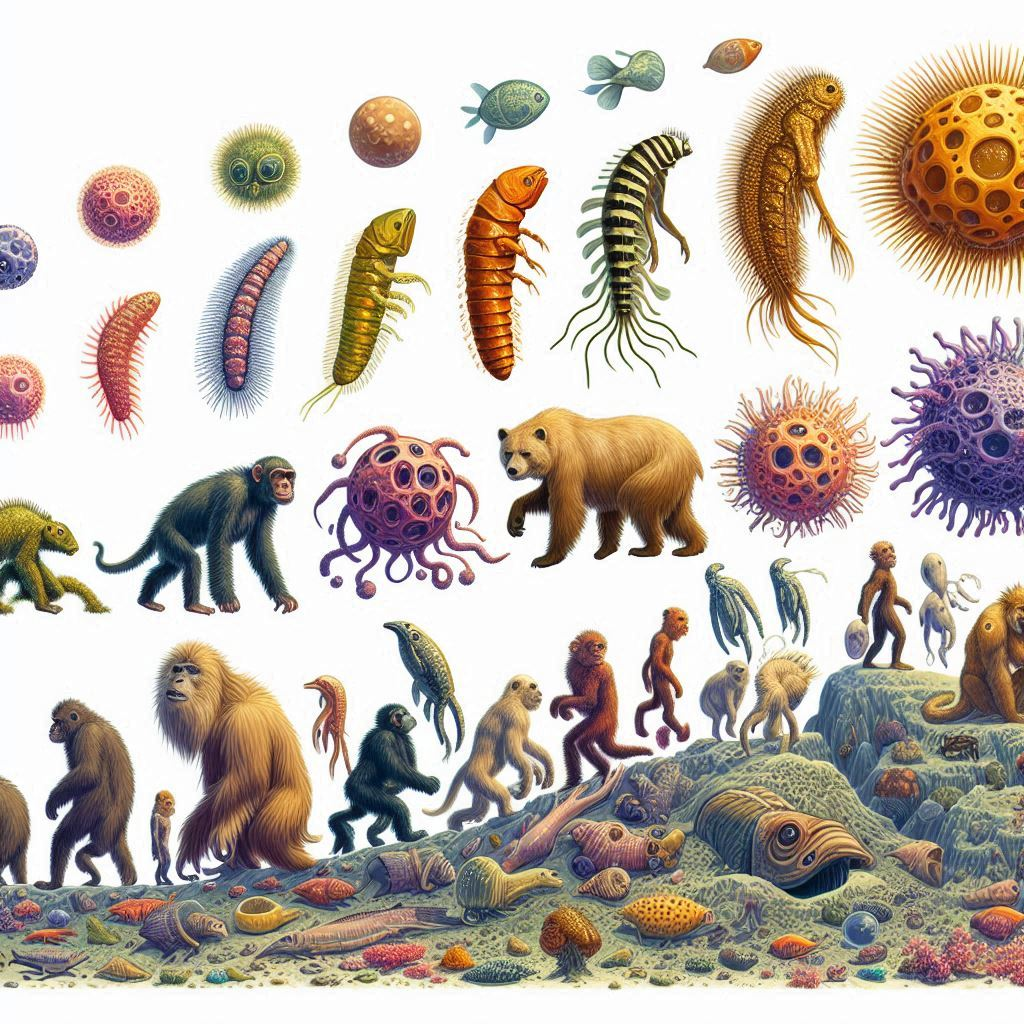
4. Development and Growth: During reproduction, cells undergo rapid division and differentiation to form new tissues and organs. Accurate DNA replication ensures that each new cell has the correct genetic blueprint to carry out its specialized functions.
5. Adaptation and Evolution: DNA copying is not only important for reproduction within species but also for evolutionary processes. Mutations that occur during replication can introduce genetic diversity, which is essential for adaptation to changing environments and for the long-term evolution of species.
DNA replication in asexual reproduction
In asexual reproduction, DNA copying plays a fundamental role in ensuring the continuity and success of the reproductive process. Asexual reproduction involves the production of offspring from a single parent, without the fusion of gametes (sex cells) or genetic recombination. Here’s how DNA replication is crucial in various forms of asexual reproduction:
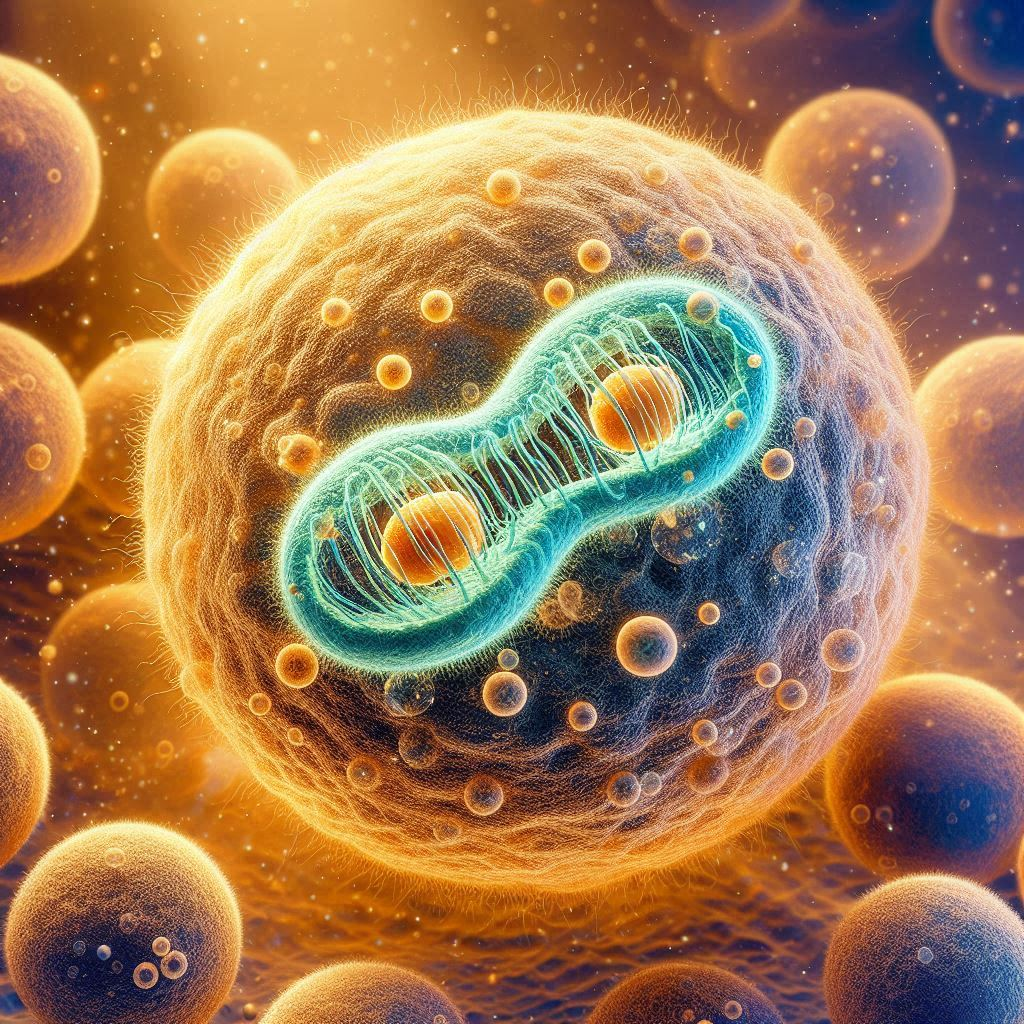
1. Binary Fission: This is common in prokaryotic organisms such as bacteria. In binary fission, the parent cell duplicates its DNA, and then the cell divides into two daughter cells, each receiving a copy of the genetic material. DNA copying ensures that each daughter cell has a complete set of genetic instructions necessary for independent existence.
2. Budding: In organisms that reproduce by budding, such as yeast and some simple animals like Hydra, DNA copying precedes the formation of a bud or outgrowth on the parent organism. The replicated DNA is then distributed into the bud, which eventually detaches to form a new individual. This process ensures that the new individual inherits a complete set of genetic information from the parent.
3. Fragmentation: Some organisms, like certain flatworms and plants, reproduce by fragmentation. In this process, the parent organism breaks into fragments, each of which can regenerate into a new individual. Prior to fragmentation, DNA replication occurs to ensure that each fragment has the necessary genetic material to develop into a complete organism.

4. Vegetative Propagation: Plants can reproduce asexually through methods like runners, tubers, bulbs, and cuttings. In vegetative propagation, DNA copying occurs in the cells of the vegetative structure (e.g., stem, root, or leaf), allowing for the formation of new plants that are genetically identical to the parent plant.
DNA replication in sexual reproduction
In sexual reproduction, DNA copying is a critical process that ensures the transmission of genetic information from parent organisms to their offspring. Unlike asexual reproduction, sexual reproduction involves the fusion of specialized reproductive cells called gametes (sperm and egg cells) from two parent organisms. Here’s how DNA replication plays a key role in sexual reproduction:
1. Production of Gametes: Before sexual reproduction can occur, specialized cells in the gonads (testes in males, ovaries in females) undergo DNA replication to produce gametes (sperm and eggs). Gametes are haploid cells, meaning they contain only one set of chromosomes (half the number found in somatic cells).
2. Meiosis: Meiosis is a specialized type of cell division that occurs in the gonads to produce gametes. During meiosis, DNA replication occurs prior to the first round of division (meiosis I) and results in the formation of two daughter cells, each with a replicated set of chromosomes. These cells then undergo a second division (meiosis II) to produce four haploid gametes, each containing a unique combination of genetic material due to crossing over and random assortment of chromosomes.
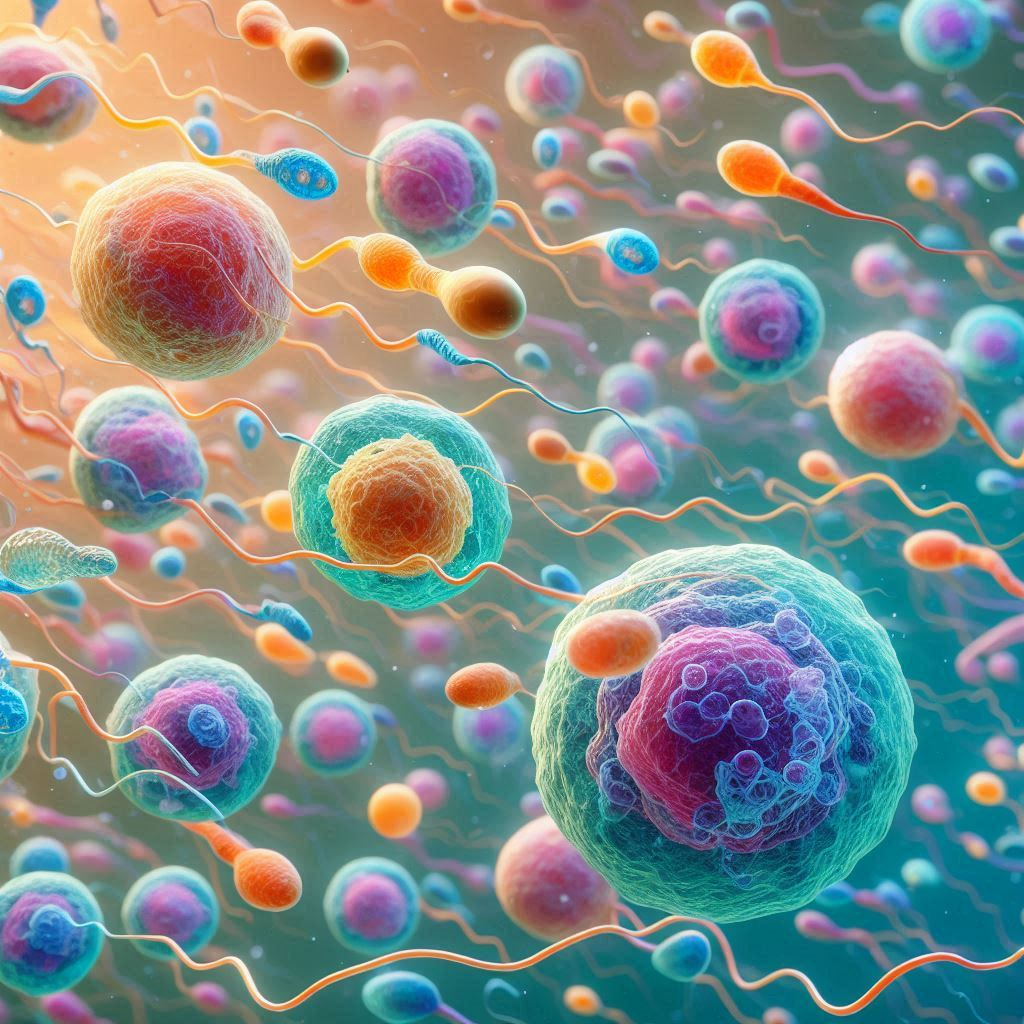
3. Fertilization: During sexual reproduction, a sperm cell from the male parent fertilizes an egg cell from the female parent. Fertilization brings together two haploid gametes to form a diploid zygote, which contains a complete set of chromosomes (one set from each parent). Prior to fertilization, both sperm and egg cells undergo DNA replication to ensure that the resulting zygote has the full complement of genetic information necessary for development.
4. Development and Growth: After fertilization, the zygote undergoes rapid cell division through mitosis, where DNA replication ensures that each new cell receives an accurate copy of the genetic material. This process continues throughout embryonic development and into adulthood, supporting the growth, differentiation, and functioning of all tissues and organs.
Complications in DNA replication
Errors in DNA replication can occur despite the highly accurate mechanisms involved. These errors can lead to mutations, which are changes in the DNA sequence. There are several types of errors that can occur during DNA replication:
1. Mismatched Base Pairing: DNA polymerases, enzymes responsible for DNA replication, usually pair complementary bases (A with T, C with G) correctly. However, occasionally incorrect nucleotides can be incorporated, leading to mismatched base pairs. This can happen due to tautomeric shifts in nucleotides or due to environmental factors that cause nucleotide damage.
2. Insertions and Deletions: Sometimes, DNA polymerase may insert an extra nucleotide or skip a nucleotide during replication. These errors are known as insertions and deletions (indels) and can lead to frameshift mutations, where the reading frame of the genetic code is altered.
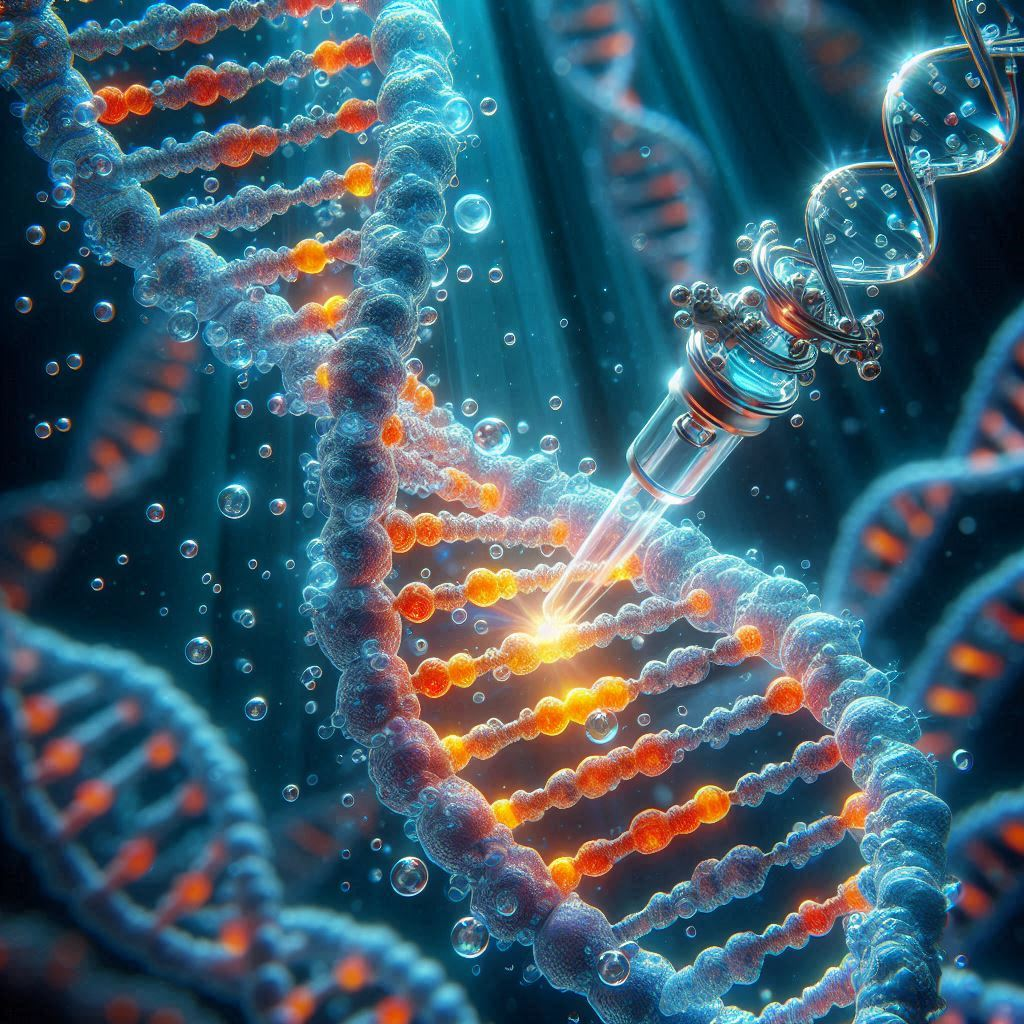
3. Replication Slippage: During replication, especially in repetitive DNA sequences, the DNA polymerase can slip and temporarily disassociate from the template strand or repeat units. This can result in the insertion or deletion of repeat units, causing expansion or contraction mutations in the repetitive region.
4. Chemical Damage: DNA is susceptible to damage from various chemicals, environmental factors (e.g., UV radiation), and reactive oxygen species. Such damage can lead to alterations in the DNA structure that are not recognized or corrected by the DNA repair mechanisms.
5. Proofreading and Repair Mechanisms: To mitigate these errors, DNA polymerases have proofreading capabilities. They can recognize and remove mismatched nucleotides before continuing with replication. Additionally, cells have DNA repair mechanisms that can correct errors after replication is complete. These mechanisms include mismatch repair, base excision repair, nucleotide excision repair, and double-strand break repair.
6. Consequences of Errors: Depending on where the error occurs and how it affects gene function, DNA replication errors can have various consequences. Some mutations may have no observable effect, while others can lead to genetic diseases, cancer, or altered protein function.
Functions
DNA (deoxyribonucleic acid) plays several crucial roles in living organisms:
1. Genetic Information Storage: DNA carries the genetic instructions that determine the development, functioning, and reproduction of all living organisms. These instructions are encoded in the sequence of nucleotide bases (adenine, thymine, cytosine, and guanine) along the DNA molecule.
2. Transmission of Genetic Information: DNA is passed from parent organisms to offspring during reproduction, ensuring the continuity of genetic traits across generations.

3. Protein Synthesis: DNA provides the instructions for synthesizing proteins. Genes, which are specific sequences of DNA, are transcribed into messenger RNA (mRNA), which is then translated into proteins. The structure, operation, and control of the body’s tissues and organs depend on proteins.
4. Regulation of Gene Expression: DNA plays a role in regulating when and how genes are expressed. This regulation is crucial for controlling the development and differentiation of cells, responding to environmental changes, and maintaining overall cellular homeostasis.
5. Mutations and Genetic Diversity: DNA can undergo mutations, which are changes in the DNA sequence. Either spontaneous mutations or exposure to mutagens (such as chemicals or radiation) can cause mutations. They contribute to genetic diversity within populations and play a role in evolution by providing new genetic variations for natural selection to act upon.
6. Epigenetic Modifications: In addition to its sequence, DNA can be modified by epigenetic mechanisms such as DNA methylation and histone modifications. These modifications can influence gene expression patterns without changing the underlying DNA sequence, affecting traits and responses to environmental factors.
7. Inheritance of Traits: DNA determines inherited traits by encoding the information for physical and biochemical characteristics that are passed from parents to offspring.
Applications
DNA has numerous applications across various fields due to its unique properties as the molecule of heredity and its role in encoding biological information. Some key applications of DNA include:
1. Biotechnology and Genetic Engineering:
- Gene Cloning and Recombinant DNA Technology: DNA is manipulated to create recombinant DNA molecules, which can be used to produce proteins of interest (e.g., insulin) or to study gene function.
- Genome Editing: Techniques like CRISPR-Cas9 utilize DNA targeting to precisely edit genes, offering potential treatments for genetic disorders or agricultural improvements.
2. Forensics:
- DNA Profiling: DNA fingerprinting is used in forensic investigations to identify individuals based on their unique DNA profiles, aiding in criminal investigations and paternity testing.
3. Medical Diagnostics and Research:

- Genetic Testing: DNA sequencing and analysis are used to diagnose genetic disorders, predict disease risk, and personalize medical treatments.
- Cancer Research: DNA sequencing helps identify mutations driving cancer development, leading to targeted therapies and personalized medicine approaches.
4. Evolutionary Biology and Anthropology:
- Phylogenetics: DNA sequences are used to reconstruct evolutionary relationships between species or populations, providing insights into biodiversity and evolutionary history.
- Human Origins and Migration: Ancient DNA analysis helps trace human migrations and evolutionary history, providing insights into human origins and adaptations.
5. Agriculture and Food Security:
- Genetically Modified Organisms (GMOs): DNA technology is used to develop crops with desirable traits such as pest resistance, improved nutrition, or increased yield.
- Food Safety: DNA-based methods are employed to detect pathogens or contaminants in food, ensuring food safety and quality.
6. Environmental Science:
- Ecological Genetics: DNA analysis is used to study biodiversity, track endangered species, and monitor ecosystem health.
- Environmental DNA (eDNA): DNA shed by organisms in their environment is used to detect and monitor species presence without direct observation.
7. Biomedical Engineering:
- Synthetic Biology: DNA synthesis and assembly techniques are used to create synthetic organisms, biosensors, and biofuels.
- Tissue Engineering: DNA scaffolds can be used to grow tissues or organs for regenerative medicine applications.
Disorders
Disorders related to DNA replication can arise from various genetic mutations or deficiencies in the mechanisms that ensure accurate DNA copying. Here are a few examples of disorders associated with abnormalities in DNA replication:
1. DNA Replication Fidelity Disorders:
- Mismatch Repair Deficiency (Lynch Syndrome): This genetic disorder is characterized by mutations in genes involved in DNA mismatch repair (e.g., MLH1, MSH2). It leads to an increased risk of colorectal cancer and other cancers due to accumulated mutations in critical genes.

2. Segmental Progeroid Syndromes:
- Werner Syndrome: This rare autosomal recessive disorder results from mutations in the WRN gene, which encodes a DNA helicase involved in DNA repair and replication. Individuals with Werner syndrome exhibit premature aging, increased risk of cancer, and other age-related conditions.
3. Replication Stress Syndromes:
- Fanconi Anemia: This inherited disorder is caused by mutations in genes associated with the Fanconi anemia pathway, which repairs DNA damage during replication. Patients with Fanconi anemia have bone marrow failure, developmental abnormalities, and an increased risk of leukemia and other cancers.
4. Telomere Maintenance Disorders:
- Dyskeratosis Congenita: This genetic disorder affects telomere maintenance, leading to bone marrow failure, skin abnormalities, and an increased risk of cancer. Mutations in genes such as DKC1, TERC, TERT, and others disrupt telomere replication and function.
5. Cancer Predisposition Syndromes:
- Hereditary Breast and Ovarian Cancer Syndrome: Mutations in the BRCA1 and BRCA2 genes impair DNA repair mechanisms, including replication fidelity. Individuals with these mutations have a significantly increased risk of breast, ovarian, and other cancers.
6. DNA Polymerase Mutations:
- Xeroderma Pigmentosum (XP): XP is a rare genetic disorder caused by mutations in genes involved in nucleotide excision repair, which corrects DNA damage induced by UV radiation during replication. Patients with XP are extremely sensitive to sunlight and have a high risk of developing skin cancer.
Treatment
The treatment options for disorders related to DNA replication vary depending on the specific condition and its underlying genetic or molecular mechanisms. Here are some general approaches and considerations:
1. Genetic Counseling and Testing:
- Genetic counseling is essential for individuals and families affected by genetic disorders related to DNA replication. It provides information about the disorder, inheritance patterns, and options for genetic testing. Genetic testing can help confirm a diagnosis, assess disease risk, and inform treatment decisions.
2. Medical Management and Surveillance:
- Cancer Screening: For individuals with predisposition syndromes like Lynch syndrome or hereditary breast and ovarian cancer syndrome, regular screening (e.g., colonoscopy, mammography, MRI) is crucial for early detection and treatment of cancer.
- Bone Marrow Transplantation: In severe cases of bone marrow failure syndromes such as Fanconi anemia, allogeneic bone marrow transplantation may be considered to replace defective stem cells and restore normal blood cell production.
3. Targeted Therapies and Supportive Care:
- Enzyme Replacement Therapy: In some genetic disorders involving deficiencies in specific enzymes (e.g., lysosomal storage disorders), enzyme replacement therapy may alleviate symptoms and improve quality of life.
- Symptom Management: Supportive care aims to manage symptoms and complications associated with genetic disorders. This may include medications, physical therapy, nutritional support, and psychological support for patients and their families.
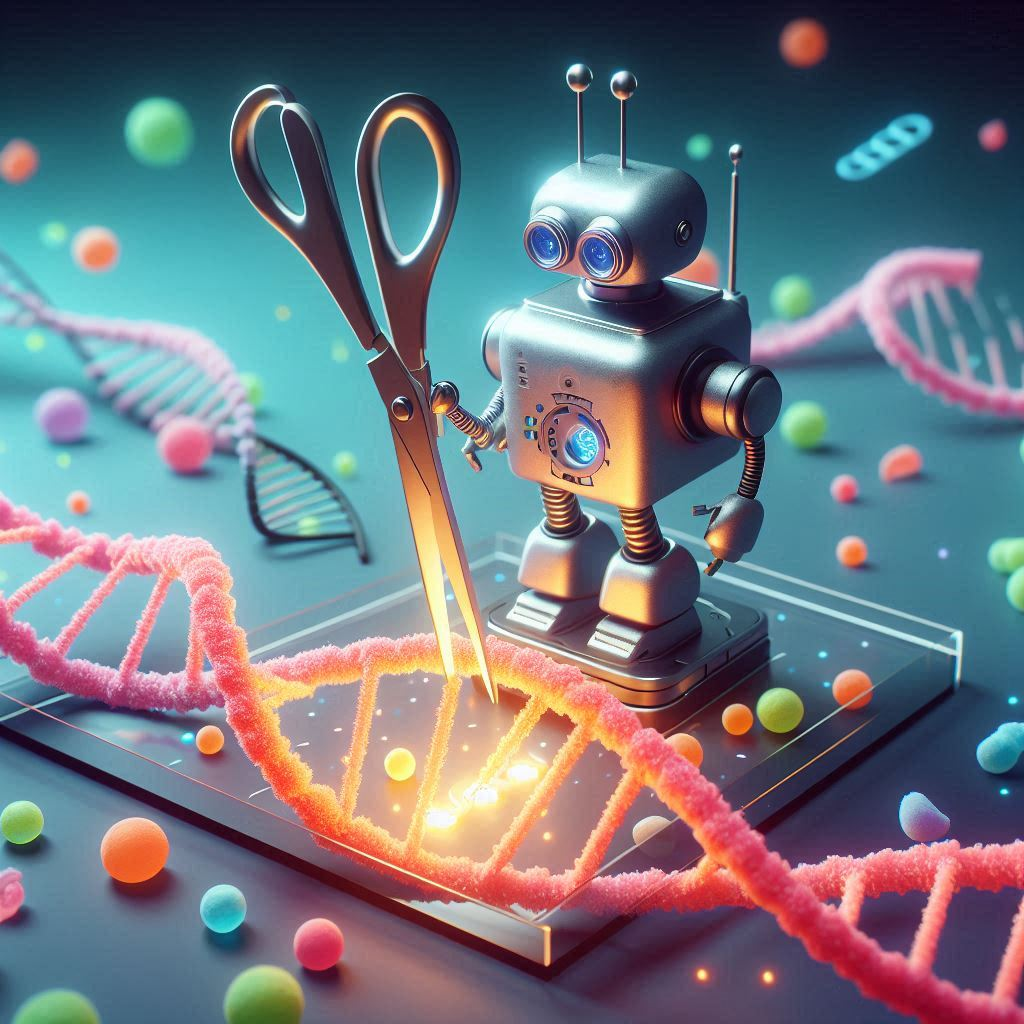
4. Gene Therapy and Emerging Treatments:
- Advances in gene therapy hold promise for treating genetic disorders at the molecular level. Gene editing technologies like CRISPR-Cas9 are being explored to correct genetic mutations responsible for disorders like cystic fibrosis and muscular dystrophy.
- Clinical Trials: Participation in clinical trials may offer access to experimental treatments and therapies under investigation for specific genetic disorders. These trials help advance research and may provide new options for managing or treating these conditions.
5. Education and Lifestyle Modifications:
- Educating patients and caregivers about the disorder, its progression, and management strategies is crucial. Lifestyle modifications, such as sun protection for individuals with xeroderma pigmentosum or dietary adjustments for metabolic disorders, may help mitigate symptoms and improve outcomes.
6. Psychosocial Support:
- Genetic disorders affecting DNA replication can have profound emotional and social impacts on individuals and families. Psychosocial support, including counseling and support groups, can help address these challenges and improve overall well-being.

FAQ (frequently asked questions)
Q: What is DNA copying in reproduction?
Ans: DNA copying, also known as DNA replication, is the process by which a cell duplicates its DNA before cell division. This ensures that each new cell or organism receives a complete set of genetic instructions.
Q: Why is DNA copying important in reproduction?
Ans: DNA copying is crucial because it allows genetic information to be faithfully passed from parent organisms to their offspring. It ensures genetic continuity and allows for the transmission of traits across generations.
Q: How does DNA copying contribute to genetic diversity?
Ans: While DNA copying ensures the inheritance of genetic traits, occasional errors (mutations) during replication can lead to genetic diversity. This diversity is essential for adaptation to changing environments and for species survival.
Q: What role does DNA copying play in the development of offspring?
Ans: In sexual reproduction, DNA copying occurs in specialized cells (gametes) to produce eggs and sperm. During fertilization, these gametes combine to form a new individual with a unique combination of genetic material from both parents.
Q: Can errors in DNA copying affect reproduction?
Ans: Yes, errors during DNA copying can lead to mutations that may impact fertility, cause genetic disorders, or increase susceptibility to diseases. However, cells have mechanisms to detect and repair these errors to maintain genetic integrity.
Q: How does DNA copying support growth and development in offspring?
Ans: DNA copying ensures that each cell in the developing embryo and throughout an organism’s life cycle has the genetic information necessary for growth, differentiation, and specialized functions.
Q: What are some real-world applications of understanding DNA copying in reproduction?
Ans: Understanding DNA copying helps in areas such as reproductive medicine (e.g., assisted reproduction techniques), agriculture (e.g., breeding for desirable traits), and conservation biology (e.g., managing genetic diversity in endangered species).
Q: How does DNA copying differ between sexual and asexual reproduction?
Ans: In sexual reproduction, DNA copying involves the formation of haploid gametes through meiosis, followed by fertilization to restore the diploid chromosome number. In asexual reproduction, DNA copying leads directly to the formation of genetically identical offspring from a single parent organism.
Q: What are the implications of studying DNA copying for evolutionary biology?
Ans: Studying DNA copying helps explain genetic variation within populations and species over evolutionary time. It provides insights into how organisms adapt to their environments and how species diverge over generations.
Conclusion
In the grand tapestry of life, DNA copying stands as a testament to the precision, complexity, and resilience of biological systems. From unicellular organisms to complex multicellular beings, the faithful replication of genetic information ensures the continuity of species and the perpetuation of life itself. Moreover, it serves as a foundation for understanding evolution, genetic diversity, and the mechanisms underlying inherited traits and diseases.
Table of Contents
Read more about DNA
Go and visit dusearchit.in and get more knowledge about others topics.
